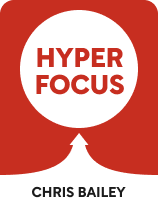

This article is an excerpt from the Shortform book guide to "Hyperfocus" by Chris Bailey. Shortform has the world's best summaries and analyses of books you should be reading.
Like this article? Sign up for a free trial here .
Do you struggle to focus on the right things? How can you make sure you’re channeling your attention in the most effective way possible?
According to Chris Bailey, the author of Hyperfocus, the quality of the tasks we pay attention to determines the quality of our lives. When we focus on high-quality tasks, we perform high-quality work and have a high-quality impact. When we focus on low-quality tasks, even if we perform high-quality work, we will have a low-quality impact.
Here are two helpful attention management strategies to help you decide what truly deserves your attention.
Attention Management Strategies
Bailey argues that hyperfocus is most beneficial when we choose the right task to focus on, so he provides several attention management strategies.
Bailey suggests focusing on “complex” or cognitively demanding tasks, like preparing a presentation or helping your child decide what college to apply to. Technically, you can hyperfocus on anything you want—including habits. But Bailey cautions against this for two main reasons.
First, hyperfocus is hard. Mental energy and willpower are both finite resources. To be the most productive version of ourselves, we need to use them efficiently. But you perform habits in autopilot mode. You don’t need to think about your habits; you do them automatically. Since you don’t need that much energy to perform habits, it doesn’t make sense to hyperfocus on them. Conversely, hyperfocus requires a lot of mental energy and willpower. So you should conserve these resources for the cognitively demanding tasks that really need them.
Second, hyperfocusing on habits worsens your performance. Bailey references several studies that demonstrated that when people focused more than usual on habitual tasks, their performance on those tasks suffered. He argues that when we hyperfocus on habits, we overthink the activities that we normally do automatically. Therefore, we end up second-guessing ourselves and doing worse on the task at hand.
| How Hyperfocus Can Help You Break Bad Habits Bailey’s suggestion not to hyperfocus on habits makes sense if these habits add value to your life. But what if you’re trying to break a bad habit? Habit experts differ on the best way to do this. Atomic Habits divides habits into four steps: A “cue” triggers a “craving” so you perform a “behavior” and receive a “reward.” To break a bad habit, you make the cue invisible, the craving unattractive, the behavior difficult, or the reward unsatisfying. Tiny Habits suggests similar strategies, most of which involve experimenting with the behavior you substitute. Hyperfocusing during the actual process of breaking your habit may make breaking it difficult since it might increase your craving—so perhaps an alternative solution is to hyperfocus when you brainstorm how you’re going to break the habit, instead. |
However, it’s not enough to hyperfocus on cognitively demanding tasks. You need to pick the right tasks to focus on. A simple strategy is to hyperfocus on the meaningful tasks you pinpointed when you created your attention management matrix. But Bailey also suggests two more strategies for picking the right tasks to hyperfocus on,
Strategy #1: Consider the Impact of Your Tasks
Bailey recommends hyperfocusing on the tasks that will have the biggest positive impact. To evaluate this, he suggests looking at both a task’s immediate and long-term effects. Think of your task as the first in a chain reaction. When you extend the chain, that’s the real impact of your task.
For example, let’s say you set an intention to be more present with your family by turning off your phone at dinner. The first effect could be that you pay more attention to what your kids are saying at the dinner table. Since you’re focused on them, your kids feel more loved. This is the secondary effect. Your kids feel more loved, so they feel more comfortable opening up to you more about a problem they’re having at school. This is the third effect.
If we extend this chain far enough, you could see your children feeling more comfortable in their relationships as an adult or being better parents to their own children—all because you put your phone away at dinner. This is an example of a task that has outsize long-term impacts that can make the temporary stress of not checking your notifications far easier.
(Shortform note: Getting Things Done also recommends choosing your tasks based on their priority levels (although it uses a six-level model instead of a matrix). Interestingly, however, author David Allen recommends working from the bottom-up instead: Getting in control of the actions in front of you frees up your mind to think about projects, which leads to higher thinking.)
Strategy #2: Make a Plan
Bailey explains that when we set even vague goals, we’re 20 – 30% more likely to achieve them than if we hadn’t set any goals at all—but when we make a plan for achieving our goals, we’re two to three times more likely to achieve them. Therefore, when you select a task to hyperfocus on, increase the likelihood you’ll complete it by creating a plan, sometimes called an “implementation intention.”
When you create an implementation intention, you plan for a behavior by assigning it a specific plan (usually a place and time). A useful formula is: When X occurs, I will do Y. This works the same way habits do: You choose to perform an action in advance. When you encounter that environment, your brain is already primed to do that action, so doing it becomes easier. (Shortform note: In fact, setting an implementation intention is one strategy Clear suggests for creating new habits in Atomic Habits. He adds that implementation intentions can be especially effective if they harness two well-known cues that trigger habits: time and place.) For example, you could set an intention to “work on your presentation.” But it’s much more powerful to say, “When I return from lunch, I will create six slides for my presentation.”
How specific you need to be varies due to several factors. Most of the time, it only needs to be specific enough so that you understand it—for example, “When I’m tired.” But if you have many tasks or a difficult task, more specificity is helpful. (Shortform note: Clear explains that this is because specificity removes the need for inspiration or motivation to kick in: all the decisions have already been made, and you just need to perform the intended action. Since more difficult tasks require more motivation, removing the need for them can be especially effective.)
It’s also crucial that you actually want to accomplish your goal. If not, setting an implementation intention isn’t as effective. (Shortform note: Prevent yourself from working on goals you’re not passionate about by learning how to set better boundaries.)
Why You Should Focus on 3 Daily Goals
Another way to ensure that you hyperfocus on the most important tasks is to set three goals for each day. These goals are the most important things you want to accomplish that day.
When you can select only three goals for the day, you’re forced to prioritize. When you know what goals are high-priority, you know what tasks will best support those goals. These are probably the tasks most deserving of hyperfocus. You also learn what is less important, so you learn what not to focus on.
(Shortform note: If setting just three priorities seems impossibly small, consider this: According to Essentialism, the word “priority” only had a singular form for centuries. We created “priorities” in the 1900s, insisting that we could now have many “first” things.)
In addition to helping you prioritize your tasks, setting three goals has two major benefits.
#1: It’s a Flexible Habit
Bailey states that setting three goals is simple enough that you can do it both when you have control over your schedule and when you don’t.
[Shortform note: Why does this matter? Probably because if it’s easy to set three goals in any situation, you’re more likely to do it every day. If you develop a habit of defining three goals every day, you’ll naturally want to complete the goals and direct your attention more often in pursuit of those goals. (We’ll discuss our brain’s innate desire to complete tasks in more detail in our discussion of learning and creativity.)]On days you have unavoidable appointments, Bailey recommends adjusting your perspective on those tasks. For example, a doctor’s appointment could become an opportunity to ask important questions about your health. (Shortform note: This may also be useful if you have little control over your tasks. Even if your everyday tasks are dictated by the whims of your boss, there’s usually some aspect of them that you can anticipate and control.)
#2: It’s Easy to Remember
You can easily remember three goals, so you’re better able to pay attention to them. Bailey does also suggest setting three weekly goals and three daily personal goals, which totals nine, but they’re still easy to remember since they’re chunked into three.
(Shortform note: Consider creating overarching weekly goals and using daily goals to complete their component parts. For example, if your goal for the week is to plan your next vacation, your daily goals could include having a conversation with your spouse about where you’d like to go or booking a hotel reservation.)

———End of Preview———
Like what you just read? Read the rest of the world's best book summary and analysis of Chris Bailey's "Hyperfocus" at Shortform .
Here's what you'll find in our full Hyperfocus summary :
- Why it's just as important to learn how to manage your attention, along with your time
- Why you still feel tired no matter how many breaks you take
- Strategies for managing your attention for better productivity and creativity






